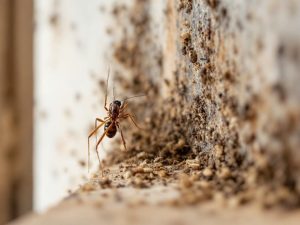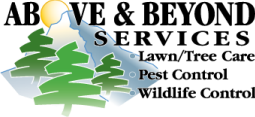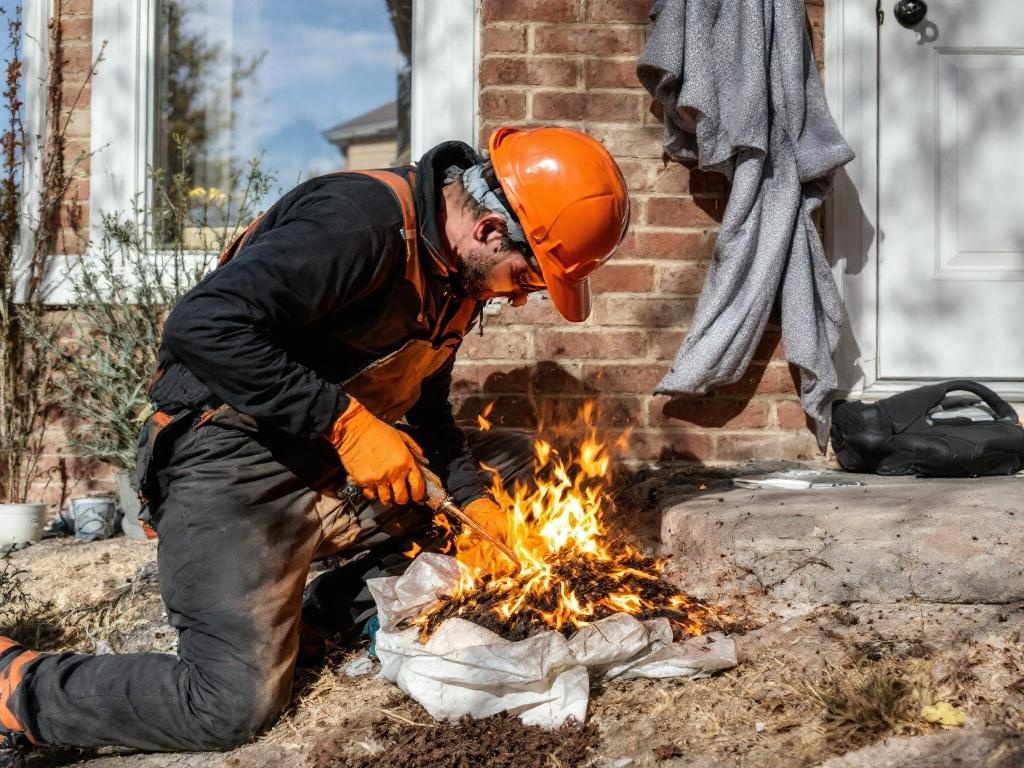Identifying Common Pests in Colorado Homes: A Homeowner’s Guide to Early Detection
Identifying common pest in Colorado homes is absolutely essential for maintaining your well-being, protecting your property, and ensuring a comfortable living environment. Indeed, while Colorado boasts stunning natural beauty, its diverse climate also supports a variety of unwelcome intruders that can seek refuge indoors. You’ll want to diligently look out for subtle signs like black garden ants trailing across your kitchen counter or pavement ants infiltrating through sidewalk cracks.
Furthermore, be vigilant for tell-tale rodent droppings near food sources and listen intently for scratching or scurrying sounds at night. Bed bugs, insidious nocturnal feeders, leave small red welts on your skin and tiny dark spots on linens. Watch for insidious termite mud tubes along foundations and hollow-sounding wood, and be cautious of venomous spiders that might seek shelter indoors.
Ultimately, understanding the behavior and signs of these common pest in Colorado can significantly empower you to take swift action and prevent larger infestations. You’ll discover more vital tips for a vibrant green yard and prevention strategies to diligently keep your home pest-free.
Common Ant Species in Colorado and Their Habitats

When you step into your Colorado home, you might not immediately realize that various ant species could be sharing your space, seeking food and shelter. Among the most common pest in Colorado are the black garden ant (also known as the black lawn ant), the pavement ant, and occasionally, the more invasive Argentine ant.
The black garden ant (Lasius niger) often establishes its nests in soil, particularly under rocks, paving stones, or along foundations outdoors. However, they frequently forage indoors, attracted to sweet foods and moisture.
The pavement ant (Tetramorium caespitum) prefers nesting in cracks in sidewalks, driveways, and foundations, often creating small mounds of displaced soil. Consequently, you’ll frequently see their trails moving across these hard surfaces and sometimes entering homes through tiny crevices.
Argentine ants (Linepithema humile), on the other hand, thrive in warmer, humid areas and are notoriously known for forming large, sprawling colonies that readily move indoors, especially during adverse weather conditions. They are attracted to a wide range of food sources. Each species has its own preferred habitat and foraging behaviors, making them incredibly adaptable to your home environment. They typically forage for food, attracted to crumbs, spills, and sugary substances.
Understanding these distinct species and their preferred habitats can significantly help you identify potential infestations early, allowing you to take targeted action before they become a larger, more entrenched problem, which is vital for managing this common pest in Colorado.
Recognizing Unmistakable Signs of Rodent Infestation
Although you might not always see them directly, the signs of a rodent infestation can be quite obvious if you know precisely what to look for. Rodents, including mice and rats, are a persistent and destructive common pest in Colorado. If you suspect rodents in your home, keep a vigilant eye out for the following unmistakable indicators:
- Droppings: The most common and clearest sign is the presence of small, dark, pellet-like droppings. Mouse droppings are typically rice-grain sized, while rat droppings are larger. You’ll often find these near food sources (pantries, under sinks), along baseboards, or in nesting areas (attics, basements).
- Gnaw Marks: Rodents constantly gnaw to keep their teeth sharp and access food. Look for chewed edges on food packaging, wooden furniture, plastic containers, electrical wires, or even structural elements. These marks can vary in size depending on the rodent.
- Nests: Rodents build nests from readily available, shredded materials like paper, fabric, insulation, or even bits of string. You might find these nests tucked away in hidden, undisturbed spots such as behind appliances, inside wall voids, in attics, basements, or cluttered storage areas.
- Noises: Listen intently for scratching, gnawing, or scurrying sounds coming from inside walls, ceilings, attics, or crawl spaces, especially at night when rodents are most active.
- Runways/Smudge Marks: Over time, rodents create distinct pathways or “runways” along baseboards, walls, or pipes. These often appear as greasy, dark smudges due to the dirt and oil from their fur.
- Unusual Pet Behavior: Pets, especially cats or dogs, may become agitated, scratch at walls, or stare intently at areas where rodents are present.
Promptly addressing these signs is crucial to prevent structural damage, food contamination, and potential health risks associated with rodents.
Identifying Bed Bugs: Crucial Details for Early Detection
Rodents aren’t the only unwelcome pests that can invade your home and disrupt your peace; bed bugs are another increasingly common pest in Colorado, particularly in urban areas and multi-unit dwellings. To effectively identify these elusive, nocturnal pests, knowing precisely what to look for is absolutely crucial.
Start by meticulously checking your bedding, mattress seams, mattress tags, box springs, and bed frames for small, reddish-brown, flat, oval-shaped insects, roughly the size of an apple seed.
These are adult bed bugs. Look closely for tiny, dark spots on sheets, mattresses, or nearby furniture; these are often bed bug fecal droppings, which may bleed onto the fabric. You might also notice small, shed exoskeletons (cast skins) or minuscule white eggs in crevices.
Furthermore, an active bed bug infestation can sometimes produce a faint, sweet, musty odor, particularly if the infestation is severe. Pay close attention to bite marks on your skin, which often appear as small, red, itchy welts arranged in lines or clusters, typically on exposed skin areas during sleep.
Regular and thorough inspections of your sleeping area and nearby furniture can significantly help catch an infestation early, which is vital for preventing widespread dissemination of this common pest in Colorado. Therefore, do not ignore these subtle signs; taking action promptly can save you from a more extensive, frustrating, and costly treatment later on.
Understanding Termite Behavior and Destructive Damage
While you might primarily think of termites as mere wood-destroyers, deeply understanding their intricate behavior is absolutely essential to effectively protecting your home from significant, often hidden, structural damage. These social insects live in vast, organized colonies and can cause extensive harm to wooden structures if left unchecked, making them an incredibly destructive common pest in Colorado. Here are key behaviors and signs of damage to diligently watch for:
- Swarming (Reproductive Termites): During warm, humid months, especially after rain, look for swarms of winged termites (reproductives) emerging from walls or foundations, often near windows or doors. These winged termites are often mistaken for flying ants. The presence of discarded wings, often found near windowsills, is a sure sign of a nearby colony.
- Mud Tubes: Inspect your foundations, crawl spaces, basements, and any wooden structures for distinctive, pencil-sized mud tubes. These protective tunnels are pathways that subterranean termites use to travel between their underground colony and their food source (your home’s wood), protecting them from predators and dry air.
- Wood Damage: Tap on wooden structures like baseboards, door frames, or support beams. Listen for hollow or dull sounds, which can indicate that termites have eaten away the interior wood. Furthermore, look for blistering or darkening of wood surfaces, or tiny holes.
- Frass (Termite Droppings): For drywood termites (less common than subterranean in Colorado but still a threat), you might find small, pellet-like fecal droppings (frass) near infested wood. These look like tiny piles of sawdust or coffee grounds.
- Tight-Fitting Doors/Windows: As termites consume wood, they introduce moisture, which can cause wood to swell. Consequently, doors or windows that suddenly become difficult to open or close can be a subtle indicator.
Early detection of these signs is paramount for preventing extensive and irreversible structural damage, which can lead to incredibly costly repairs.
The Dangers of Spiders in Your Colorado Home
Have you ever wondered what dangers spiders might truly pose in your Colorado home? While the vast majority of spiders found indoors are harmless and often beneficial (as they eat other insects), some can be quite dangerous, and recognizing the venomous ones is crucial for your safety and peace of mind. Knowing which ones to watch out for can help keep you and your family safe from potentially harmful bites.
Here’s a quick overview of the most common pest in Colorado when it comes to dangerous spiders and their associated risks:
| Spider Type | Dangers | Identification & Habitat |
|---|---|---|
| Black Widow | Venomous bite can cause severe pain, muscle cramps, nausea, sweating, and tremors. Rarely fatal, but requires immediate medical attention. | Shiny black body, distinctive red hourglass mark on abdomen. Builds irregular, messy webs often in dark, undisturbed areas like garages, sheds, crawl spaces, and woodpiles. |
| Brown Recluse | Bite may lead to necrotic (flesh-eating) skin lesions, causing tissue destruction, and potentially systemic reactions. Healing can be slow and may require medical intervention. | Brown body, violin-shaped mark on its back (cephalothorax). Builds irregular, “sheet” webs in secluded, undisturbed areas like closets, basements, attics, and cluttered storage boxes. Often found in less-trafficked areas. |
| Hobo Spider | Can cause painful bites that may lead to inflammation, redness, and in some cases, a slow-healing lesion. Less severe than Black Widow or Brown Recluse. | Brown body, distinct chevron-like markings on abdomen. Builds funnel-shaped webs in dark, moist areas like basements, crawl spaces, and around foundations, often found close to the ground. |
If you suspect a bite from a venomous spider, seek immediate medical attention. Proactive measures like sealing cracks and crevices, reducing clutter, and using sticky traps can help minimize encounters with these potentially dangerous common pest in Colorado.
How to Spot and Prevent Cockroach Infestations
If you notice small, dark, pepper-like droppings around your home, a musty or oily odor in the air, or even see a cockroach scurrying across the floor, you might be dealing with a cockroach problem. These resilient insects are a pervasive and unsanitary common pest in Colorado, and knowing what to look for can help you act quickly to prevent a full-blown infestation.
Here are some tell-tale signs to watch for:
- Live Cockroaches: Spotting one or more cockroaches during the day, especially in kitchens or bathrooms, is a strong indicator of a larger infestation, as they are primarily nocturnal.
- Egg Cases (Oothecae): Look for brown, oval-shaped egg cases, which are typically found in hidden, dark, and moist areas like behind appliances, under sinks, or in cracks and crevices.
- Shed Skins: Cockroaches molt as they grow, leaving behind their light brown, translucent shed skins in dark, warm spots, often near their food sources or nesting areas.
- Fecal Matter: Beyond small droppings, you might see “smear marks” or streaks of dark brown or black fecal matter on walls, countertops, or in drawers, resembling coffee grounds or black pepper.
- Unpleasant Odor: A distinct, musty, or oily odor, often described as stale, can become noticeable in heavily infested areas.
- Noise: In severe infestations, you might hear subtle rustling sounds coming from walls or under appliances, especially at night.
To prevent infestations, maintain impeccable hygiene, eliminate moisture sources, seal all cracks and entry points, and store food in airtight containers. If you spot these signs, prompt action is crucial for managing this common pest in Colorado.
Effective Strategies for Pest Prevention and Control in Colorado Homes
Effective pest prevention and control starts with maintaining a consistently clean and organized home, proactively addressing factors that attract common pest in Colorado. Indeed, a multi-faceted approach is key to long-term success.
- Seal Entry Points: Meticulously seal all cracks and gaps around windows, doors, foundations, and utility entry points (pipes, wires) to physically block pests from entering your home. Use caulk, weatherstripping, or steel wool as appropriate.
- Manage Moisture: Repair any leaky pipes, faucets, or appliances immediately. Use dehumidifiers in damp areas like basements and crawl spaces, and ensure proper ventilation in bathrooms and kitchens. Excess moisture is a magnet for many
common pest in Colorado, especially mold-loving insects like cockroaches and silverfish. - Proper Food Storage: Store all food in airtight containers, promptly clean up crumbs and spills, and avoid leaving pet food out overnight. Regularly dispose of garbage in sealed bins and take it out frequently.
- Reduce Clutter: Minimize clutter in attics, basements, garages, and storage areas. Clutter provides ideal hiding and nesting spots for rodents, spiders, and cockroaches.
- Exterior Maintenance: Trim shrubs and trees away from your home’s foundation and roof to eliminate bridges for pests to access your house. Keep gutters clean and ensure proper drainage away from the foundation.
- Regular Cleaning: Vacuum and sweep frequently, especially in kitchens and dining areas, to remove food debris and insect eggs.
- Identify and Act Quickly: If you notice initial signs of an infestation (as described above), act quickly. Identify the specific pest and choose appropriate traps or bait (e.g., sticky traps for spiders, rodent traps, ant baits). Conversely, for persistent or widespread problems, do not hesitate to consult a professional pest control service. Their expertise can ensure safe and thorough eradication of even the most stubborn
common pest in Colorado.
By implementing these comprehensive strategies, you create an inhospitable environment for pests, safeguarding your home effectively.
In conclusion, being proactive and well-informed about common pest in Colorado is an absolute necessity for every homeowner. By meticulously familiarizing yourself with the subtle yet crucial signs of various pests, understanding their preferred habitats, and knowing precisely how to identify them early, you empower yourself to take decisive action before minor issues escalate into costly and overwhelming infestations.
Indeed, remember that prevention is always the most effective strategy—maintaining a clean and organized home, diligently sealing all potential entry points, and consistently managing moisture levels are your primary lines of defense. Ultimately, if you find yourself facing a significant or persistent infestation that feels beyond your control, do not hesitate to call in a professional pest control service.
By embracing these proactive pest management tips for a vibrant green yard, you not only protect your home’s integrity but also ensure the ongoing comfort, safety, and peace of mind for you and your loved ones in the beautiful, yet sometimes challenging, Colorado environment. For professional services, contact Above and Beyond.
Key Takeaways: Spotting Common Pests in Colorado Homes
- Ant Infestations: Look for tell-tale signs of ant infestations, such as visible trails of black garden ants or subtle nests in soil and under pavement rocks, indicating a
common pest in Colorado. - Rodent Presence: Check meticulously for rodent droppings, distinct gnaw marks on food packaging or structures, and shredded materials indicating nesting areas throughout your home, crucial signs of a
common pest in Colorado. - Bed Bug Identification: Thoroughly inspect bedding, mattress seams, and furniture for small, reddish-brown bed bugs, tiny dark droppings, or a faint, musty odor, pinpointing this
common pest in Colorado. - Termite Activity: Identify potential termite activity by carefully looking for distinctive mud tubes on foundations, signs of swarming (discarded wings), and hollow sounds when tapping on wooden structures.
- Dangerous Spiders: Be vigilant for dangerous spiders like Black Widows and Brown Recluses, checking for their characteristic webs and being aware of the symptoms of their bites.
- Cockroach Indicators: Watch for small, dark droppings, shed skins, a musty odor, and the presence of live cockroaches, particularly at night, indicating an active infestation.
- Proactive Prevention: Implement effective strategies for pest prevention and control, such as sealing entry points, managing moisture, and maintaining cleanliness, to minimize the presence of
common pest in Colorado.




